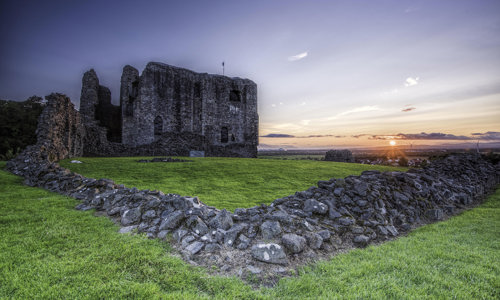History
Crossraguel Abbey stands silent and ruined today, but its relative completeness still conveys the peace and spiritual glory of its past.
Duncan of Carrick, who later became Earl of Carrick, founded the abbey in the early 1200s. The monks who served here over four centuries were of the Cluniac order, named after the French abbey of Cluny. Paisley and Crossraguel were Scotland’s only Cluniac monasteries.
An ancient holy place
The site of the abbey may have been an ancient holy place, as the name Crossraguel probably means ‘the cross of Raighail’. Raighail was an Irish saint, usually identified with St Regulus or St Rule, whose shrine was at St Andrews.
A prayer cross may have stood on the site in the Dark Ages. This may have been similar to the Barochan Cross that now stands in Paisley Abbey but once stood in the parish of Houston.
Spiritual and temporal strife
Crossraguel was meant as a place for the Opus Dei or ‘Work of God’ but the brethren were beset by troubles.
In the early years, an argument raged between Paisley and her daughter house over Crossraguel’s independence. Paisley fought hard to cling on to the churches and to other endowments granted by Earl David to Crossraguel. Crossraguel probably didn’t function properly until the late 1200s as a result.
Then came the Wars of Independence with England after 1296. Robert the Bruce was by this time Earl of Carrick (his grandfather having married Earl Duncan’s granddaughter). Crossraguel’s monks were loyal to their new patron throughout the conflict, causing the abbey to be targeted and severely damaged.
Phoenix from the flames
The abbey church and cloister that visitors see today date mostly from the 1300s and 1400s. Just about the only surviving fragment from the 1200s is the south wall of the nave.
Among the abbey’s best features are its:
- choir – a 15th-century masterpiece with an elegant polygonal apse and fine decorative details such as the sedilia (priests' seats)
- intact and impressive 15th-century chapter house in the cloister
- sizeable remains from the early 1500s such as the tower house built by Abbot William Kennedy and an imposing gatehouse
Natural history
Pigeons lived in the dovecot and their eggs and young (known as peavers) were used for food. Droppings became fertiliser for the abbey gardens.
Peavers were considered a great delicacy. The birds were collected at only a few weeks old, making for very tender meat. Pigeons lay year round, so eggs were available even in the lean winter months.













